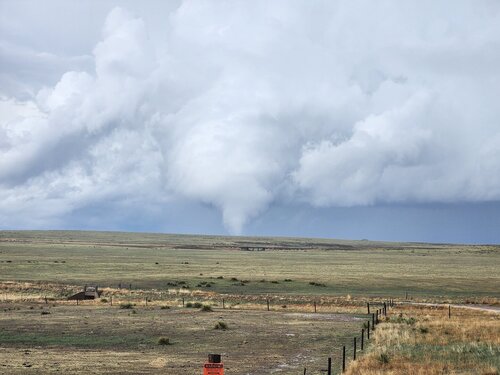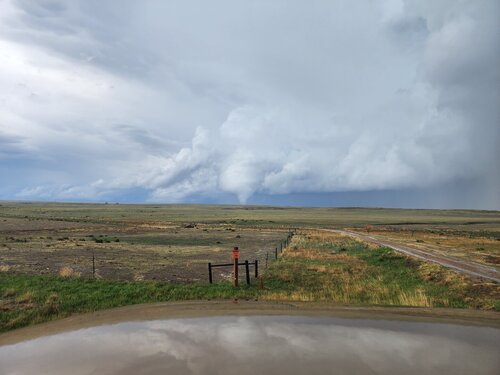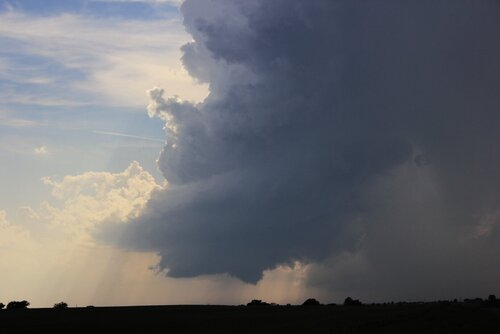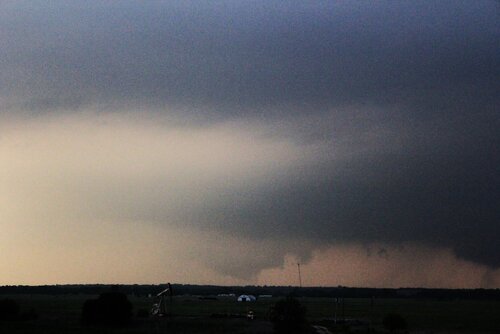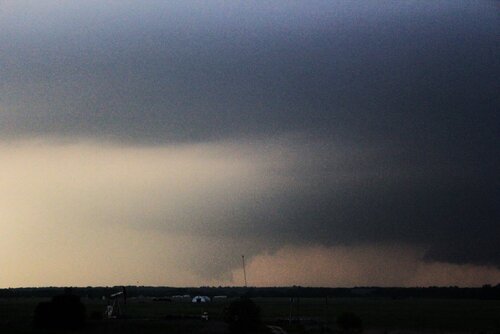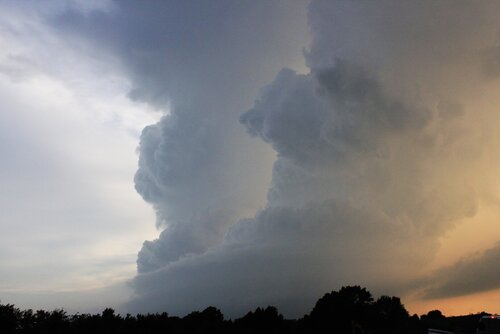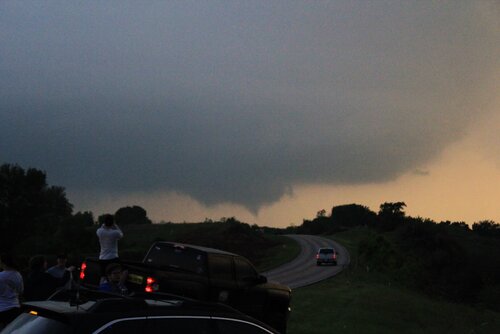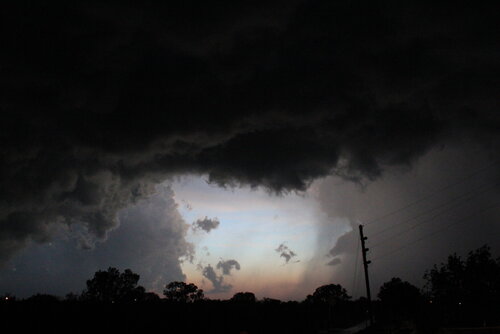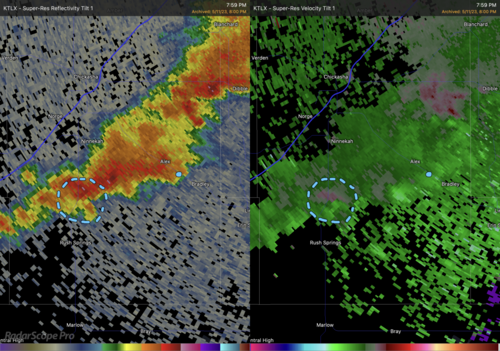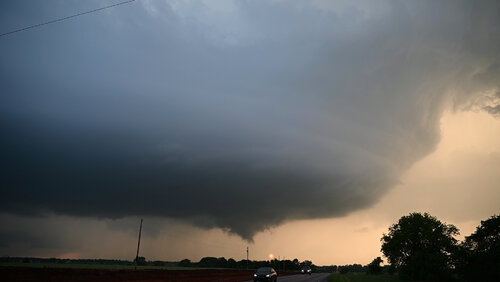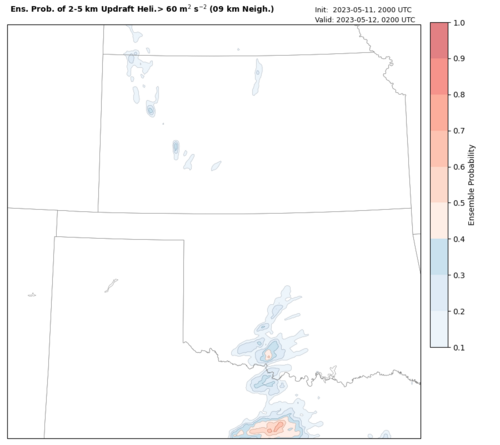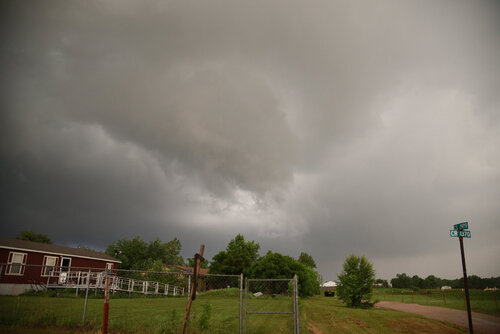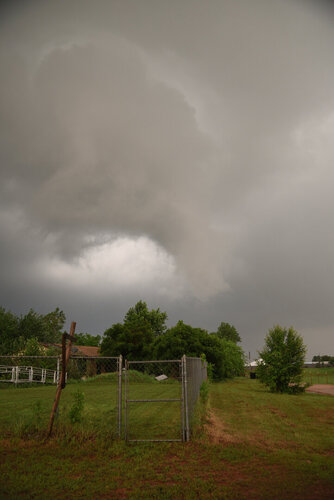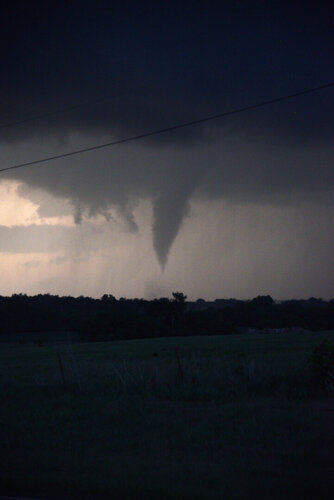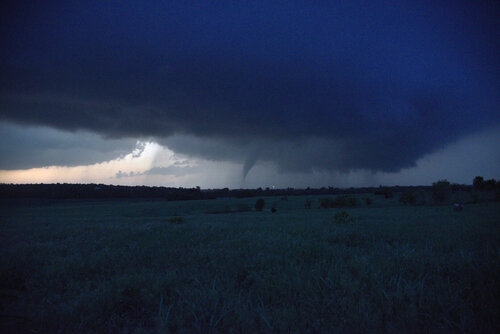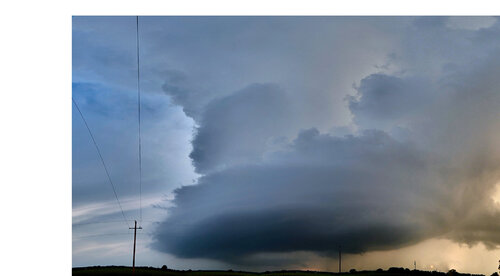gdlewen
EF4
2023-05-11 REPORT: TX/OK/KS
This will be part one, describing the initial storm intercept on 5/11/2023: an LP(like)-supercell near Comanche, OK. No tornadoes, and so probably a bit of a snooze for most chasers, but it featured an extremely "skinny" updraft tower and dissipated as an open helical (or cork screw) configuration which made it OK that I was out of position for the Tuttle tornado (not really.)
I had a 1PM meeting in OKC which was supposed to go an hour but wound up taking almost three, so it was getting late by the time I reached Chickasha. A cell had already formed near Randlett, which was in my target area so I monitored it as I drove south towards Lawton. While heading south, a small cluster of cells formed near Geronimo, but as they showed no signs of intensifying, I picked that Randlett storm and headed south to intercept it near Meridian/Comanche.
The cell had a distinctly LP-like character with an elongated "hook" and a center of rotation was displaced away from the precipitation core. (Here I have the 4th Tilt for velocity along with the lowest title for reflectivity just for purposes of illustration, since the rotation in the lower elevations is less pronounced.)
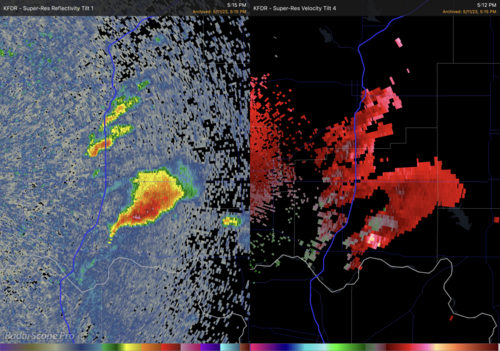
I like the 'blink comparator" type of presentation instead of the side-by-side offered by most apps, because it's easier to correlate features in the reflectivity with corresponding features in velocity scales. (I have stopped bugging RadarScope about offering this as an option because I am tired of being ignored. it's one line of code so if they were interested they could do it in a heartbeat. Plus--the blink comparator was good enough for Tombaugh to discover Pluto....)
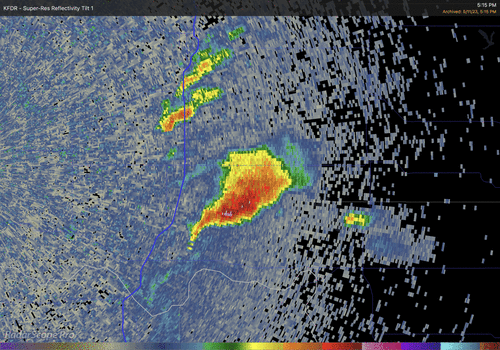
I think I can be forgiven for targeting this cell, since it seemed like just the opening act of what promised to be a good day. (Plus, I have hard time resisting the opportunity to witness the sculpted helical form of rotating supercells....)
I intercepted it near Comanche, and was surprised at how narrow was the updraft tower. (And it's already beginning to dissipate.)
View attachment 20230511 Comanche LPc.mp4
Within 15 minutes it was over. All that's left is a cloudy helix, barely rotating.
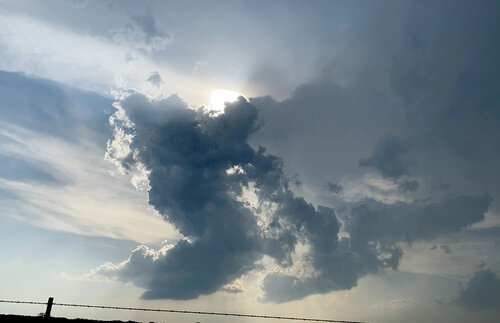
By now, one of the innocuous cluster of cells I bypassed near Geronimo was dropping a (confirmed) tornado near Tuttle, and I was left wondering what I missed there, and if my fixation with this LP supercell had cost me dearly. (To be continued.)
This will be part one, describing the initial storm intercept on 5/11/2023: an LP(like)-supercell near Comanche, OK. No tornadoes, and so probably a bit of a snooze for most chasers, but it featured an extremely "skinny" updraft tower and dissipated as an open helical (or cork screw) configuration which made it OK that I was out of position for the Tuttle tornado (not really.)
I had a 1PM meeting in OKC which was supposed to go an hour but wound up taking almost three, so it was getting late by the time I reached Chickasha. A cell had already formed near Randlett, which was in my target area so I monitored it as I drove south towards Lawton. While heading south, a small cluster of cells formed near Geronimo, but as they showed no signs of intensifying, I picked that Randlett storm and headed south to intercept it near Meridian/Comanche.
The cell had a distinctly LP-like character with an elongated "hook" and a center of rotation was displaced away from the precipitation core. (Here I have the 4th Tilt for velocity along with the lowest title for reflectivity just for purposes of illustration, since the rotation in the lower elevations is less pronounced.)

I like the 'blink comparator" type of presentation instead of the side-by-side offered by most apps, because it's easier to correlate features in the reflectivity with corresponding features in velocity scales. (I have stopped bugging RadarScope about offering this as an option because I am tired of being ignored. it's one line of code so if they were interested they could do it in a heartbeat. Plus--the blink comparator was good enough for Tombaugh to discover Pluto....)

I think I can be forgiven for targeting this cell, since it seemed like just the opening act of what promised to be a good day. (Plus, I have hard time resisting the opportunity to witness the sculpted helical form of rotating supercells....)
I intercepted it near Comanche, and was surprised at how narrow was the updraft tower. (And it's already beginning to dissipate.)
View attachment 20230511 Comanche LPc.mp4
Within 15 minutes it was over. All that's left is a cloudy helix, barely rotating.

By now, one of the innocuous cluster of cells I bypassed near Geronimo was dropping a (confirmed) tornado near Tuttle, and I was left wondering what I missed there, and if my fixation with this LP supercell had cost me dearly. (To be continued.)

